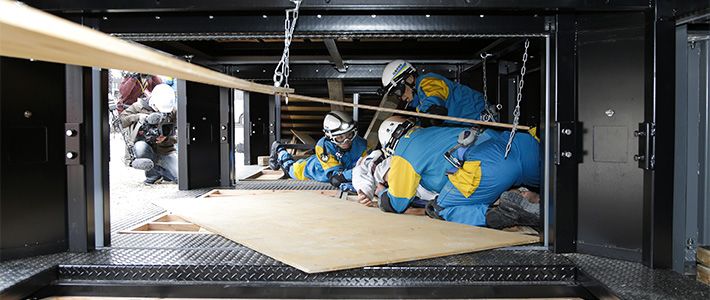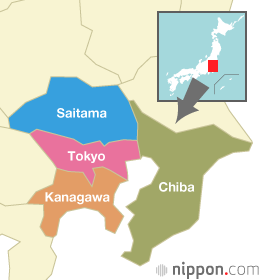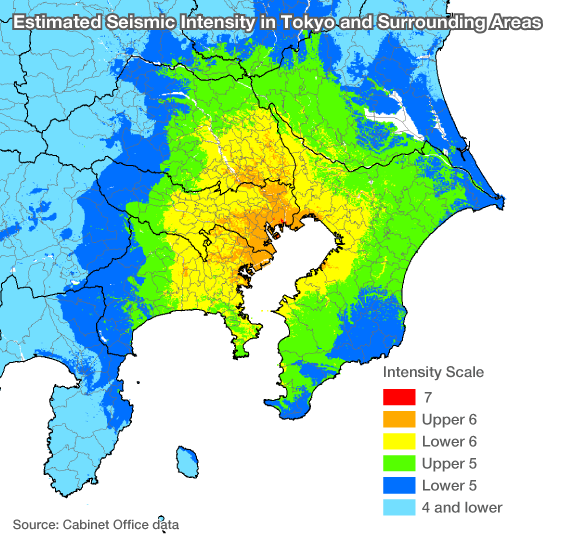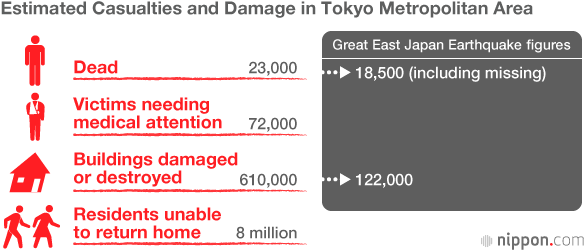
Preparing for the Big One: New Earthquake Measures Unveiled for Tokyo Metropolitan Area
Society- English
- 日本語
- 简体字
- 繁體字
- Français
- Español
- العربية
- Русский

In late March the Japanese government unveiled a new disaster response strategy in preparation for a hypothetical major earthquake striking directly below the Tokyo metropolitan area. The plan sets out steps for rapid mobilization of up to 140,000 police officers, firefighters, and Self-Defense Force troops nationwide who will carry out disaster relief in Tokyo and the adjacent prefectures of Chiba, Kanagawa, and Saitama. Measures look to streamline disaster response by bypassing the need for local municipalities to request aid. They include securing routes into the disaster areas to facilitate rescue, medical, and firefighting efforts along with establishing designated distribution points for relief items in affected areas within the critical first three days following a quake.
Human Toll Expected to Reach Tens of Thousands
Major seismic events triggered by subduction of the nearby Philippine Plate have repeatedly rattled Tokyo and the southern Kantō region. The most recent was the 1923 Great Kantō Earthquake, a temblor registering 7.9 on the Richter scale that destroyed large sections of Tokyo and surrounding areas and claimed more than 100,000 lives. Experts believe there is a 70% probability of a magnitude-7 or higher tremor striking the area within the next 30 years.
The government’s new emergency plan is built on estimates of a magnitude-7 quake occurring directly below the Tokyo metropolitan area. Such a quake is predicted to produce shaking of upper 6 on the Japanese seismic intensity scale, which in a worst-case scenario could result in approximately 23,000 fatalities.

In addition to loss of life, the emergency plan calculates that as many as 72,000 people will require medical attention. Fires are estimated to destroy 410,000 structures, with an additional 200,000 buildings expected to collapse or suffer severe structural damage.

Another concern following a massive tremor is the inability of residents to return home. Transportation routes are expected to be paralyzed following such a disaster and the government estimates as many as 8 million people could be stranded throughout the Kantō region, with more than half, or 4.9 million, marooned in Tokyo. Evacuation facilities in quake-affected areas could potentially have to shelter up to 7.2 million people, leading many to call for the government to take greater action in addressing the need for temporary shelter.
Quick and Smooth Emergency Response
Under the emergency plan, up to 347,000 personnel could be mobilized for rescue, medical, and firefighting efforts. This number includes police, firefighters, and other emergency responders from around the country along with those based inside the Tokyo metropolitan area. To coordinate mobilization the government plans to dispatch 450 aircraft and 330 vessels to transport personnel and relief items.
Support Units
| Police | 14,000 | (80,000 intraregional) |
| Firefighters | 16,000 | (127,000 intraregional, including volunteer firefighters) |
| Self-Defense Force troops | 110,000 | |
| Up to 347,000 total personnel | ||
| Aircraft | 450 | |
| Vessels | 330 | |
Planners have designated 150 hospitals around Tokyo and the three adjacent prefectures to serve as emergency medical centers. To ensure victims quickly receive needed care, 1,400 disaster medical assistance teams from around the country will be transported to predetermined medical hubs via air or land routes, where they will set up and run triage centers.
Emergency stocks prepared by municipalities and private citizens are expected to run dry within a few days of a quake. To speed up distribution of essential items, authorities will establish eight supply bases in Tokyo and adjacent prefectures to provide shipments of relief goods to meet anticipated needs of victims from the fourth to seventh day after an earthquake. Relief goods will include 53 million meals, 340,000 blankets, and over 4 million disposable diapers.
Predetermined Amount of Relief Goods
| Meals | 53 million |
| Blankets | 340,000 |
| Infant formula | 20 tons |
| Disposable diapers | 4.16 million |
| Portable toilets | Enough for 31.5 million uses (Amounts fulfill needs from the fourth to seventh day following a quake.) |
| Drinking water | 220,000 liters (Enough to cover needs in the first week.) |
To ensure that shipments make it to destinations quickly and smoothly, the emergency plan calls for Tokyo’s outer loop road and eight radial expressways leading into the capital to be closed to all but emergency traffic.
Keeping Level Heads
Millions travel in and out of the Tokyo metropolitan area from around the Kantō region each day. A daytime quake could potentially leave staggering numbers of workers, students, and others stranded. To prevent confusion from breaking out as people try to return home en masse, the government is calling on residents to expect to spend up to several days at temporary accommodations, including offices, schools, and emergency shelters.
Below are steps the government is asking residents to take before and after a major tremor.Earthquake Preparation
- Establish emergency contact procedures among friends and family, including checking how to use Disaster Emergency Dengon Dial, a disaster voice message board provided by telecommunications company NTT.
- Stock three days of emergency supplies of food, water, and other daily necessities.
- Prepare homes by securing household furniture, installing earthquake-activated circuit breakers, and other measures.
In the Event of an Earthquake
- Be prepared to evacuate quickly if fires break out.
- Refrain from moving about outside or driving unless absolutely necessary.
- Refrain from buying up available stocks of emergency items.